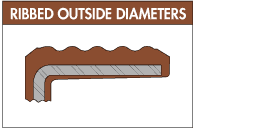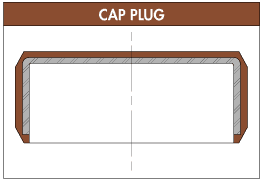|
|

  |
 |
 |
 RUBBER-COVERED OUTSIDE DIAMETER VERSUS METAL OUTSIDE DIAMETER SEALS RUBBER-COVERED OUTSIDE DIAMETER VERSUS METAL OUTSIDE DIAMETER SEALS
Rubber-covered outside diameter seals are the most versatile designs and
the most economical when produced in nitrile materials. They are more effective
against outside diameter (OD) leakage on bores with rougher surface finishes.
They allow sealing in bores which have wider tolerance resulting from original
machining or extended field service; and protect against bore damage during
seal installation and replacement. For softer housing materials, including
aluminum, brass, and plastics, rubber OD seals better protect the housing
against damage during installation. They may also be used as an economical
substitute for stainless steel cases to prevent corrosion.

 RUBBER-COVERED SEALS WITH RIBBED OUTSIDE DIAMETER RUBBER-COVERED SEALS WITH RIBBED OUTSIDE DIAMETER
Rubber covered oil seals with ribbed outside diameters allow for increased
interference between the seal and bore without increasing installation force.
Thus, ribbed designs can help the seal compensate for wider bore tolerances
such as those found in molded plastic or as-cast metal components. Ribbed seals
have the potential to dramatically reduce manufacturing costs of mating bores
by eliminating expensive machining operations while having no impact on the
sealís cost. Contact deVries Internationalís technical support staff for help in
investigating these potential cost savings.

 RUBBER-COVERED CAP PLUGS RUBBER-COVERED CAP PLUGS
When manufacturing housings, you can reduce production costs substantially
by using rubber-covered cap plugs from deVries International. With rubber-
covered cap plugs, a housing with through-holes for two or more shafts can
be modified to accommodate fewer shafts. The cap plugs seal the unused
through-holes; and they are easy to install and remove. Thus, you can mass-
produce one housing design for a wide range of applications.
Cap plugs are also useful when an assembly must be tested before shipment
to the end customer. The through-holes not used during testing are sealed with
cap plugs. Later, if shafts are to be installed, the cap plugs can be removed with
no risk of damage to the bores.

|
|
|
|






